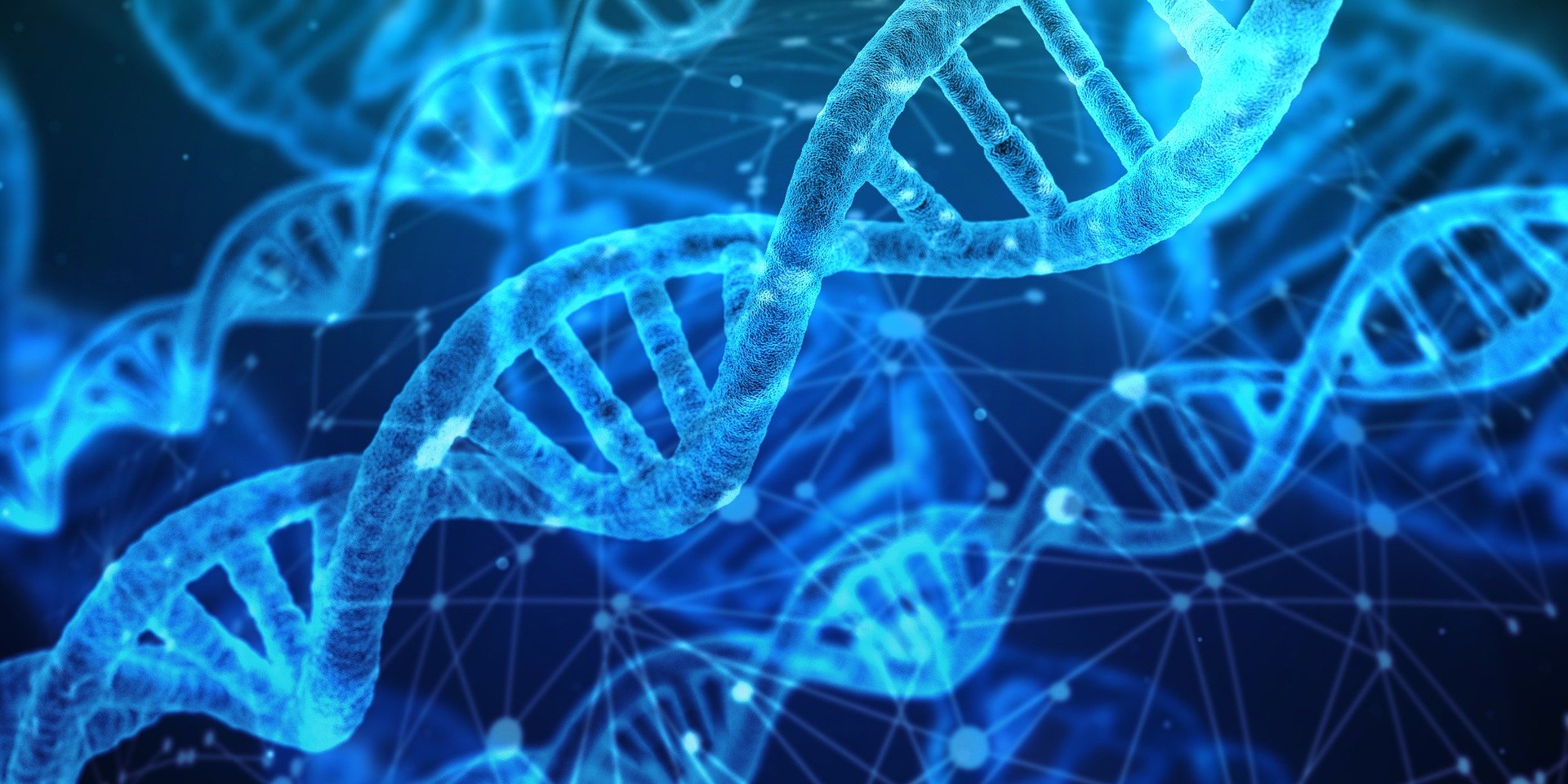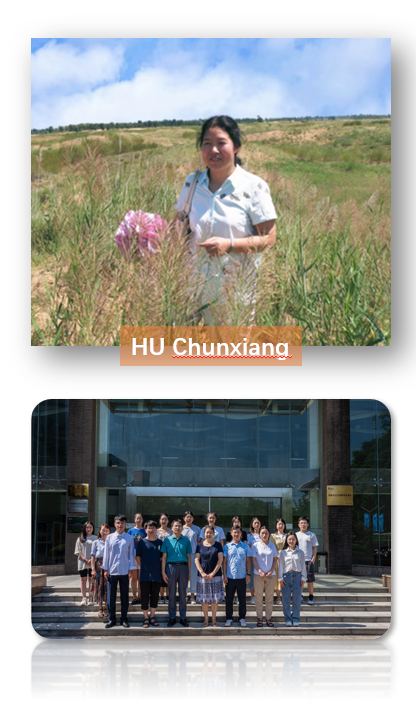
Centers
Research Group on Algal Biology in Particular Environments
 |
Faculty Members: Prof. WANG Gaohong; Dr. LI Hua; Dr. YANG Haijian; Dr. LI Xiaoyan
Our group is one of the pioneer research teams engaged in terrestrial algae, biological soil crust, and space biology in China. The target ecosystems of interest include deserts, semi-drylands, saline-alkali soils, and stratosphere. We focus on exploring the biodiversity, physiological metabolism, and adaptive evolution of green algae and cyanobacteria with multiple omics techniques. We are also interested in constructing the Closed Ecological Life Support System (CELSS) with aquatic organisms for space flight, along with exploiting high-value products.
Algal Biology in Particular Environments (ABPE) team has established a standard method in stabilization sandy soil surface with cyanobacteria, and has applied to desert environmental improvement for more than 3500 hm2. Our space life support system could stably operate for more than 20 days and has performed a dozen of Chinese and international space flights. ABPE team is presently funded by the National Key R & D Program, International Collaboration Program, the Strategic Priority Science and Technology Program of the Chinese Academy of Sciences (Class A), the National Manned Space flight Project, and the National Natural Science Foundation of China. We have achieved 11 authorized invention patents, 3 government prizes for science and technology, and have published over 200 scientific research papers, including 3 academic books or chapters, and 142 international papers cited by Science Citation Index.
Ongoing Researches:
1. Using high-throughput sequencing methods and multiple omics data, we study the ecosystem functionality and underlying mechanisms of natural and artificially induced cyanobacterial biocrusts in the aspects of community composition, assembly, interaction, and algal metabolism, aiming to promote the innovation of the cyanobacterial inoculative technology on ecological restoration of degraded drylands.
2. Combining molecular ecology methods and biostatistical approaches, we investigate cellular physiology, molecular regulation, and species interaction of the terrestrial cyanobacterial community under environmental stresses, in order to deeply understand the potential effects of biodiversity on ecosystem multifunctioning.
3. From the facets of carbon fixation, transformation, allocation and accumulation, we try to explore the prospective application of microalgae and cyanobacteria on carbon sequestration and commercial products.
4. The responding mechanisms of microalgae on the signal transduction and epigenetic modification under the stress conditions, including heat shock, high salinity and strong radiation, are of interest to be explored.
5. We construct different space closed life support systems with microalgae, protozoa, fish and vascular plant to examine the growth, metabolism and interaction of system members in the adaptation of space environments, and to develop the control theory and technique for the stability of the closed life support system.
Main Publications:
1. Academic monographs
Hu CX*, Gao KS, Whitton BA. Semi-arid Regions and Deserts. In: Ecology of Cyanobacteria II: Their Diversity in Space and Time (Whitton BA ed.), Springer Science + Business Media Dordrecht. p.345-369, 2012.
Liu YD, Hu CX, Zhang WJ et al. Environmental Biology of Desert Cyanobacteria and Dune Fixation by Biological Soil Crusts. Science Press, Beijing, 2013.
Liu YD et al. Desertification Control and Regional Sustainable Development. Science Press, Beijing, 2013.
2. Research papers and patents in recent 5 years
2022
Wang Q, Zhang QY, Han YC, Zhang DL, Zhang CC, Hu CX*. The carbon cycle in microbial ecosystems of biological soil crusts. Soil Biol Biochem, 171: 108729, 2022.
Han YC, Wang Q, Li Q, Hu CX*. Active metabolism and biomass dynamics of biocrusts are shaped by variation in their successional state and seasonal energy resources. Sci Total Environ, 831: 154756, 2022.
Li YL, Wei JY, Yang HJ, Zhang DL, Hu CX*. Biogeography, driving factors, assembly, and co-occurrence patterns of archaeal community in biocrusts. Front Microbiol, 13:848908, 2022.
Li Q, Hu CX, Yang HJ*. Responses of cyanobacterial crusts and microbial communities to extreme environments of the stratosphere. Microorganisms, 10,1252, 2022.
Lan S*, Wu L, Adessi A, Hu C*. Cyanobacterial persistence and influence on microbial community dynamics over 15?years in induced biocrusts. Environ Microbiol, 24(1): 61-88, 2022.
Yang HJ, Hu CX*. Soil chemistry and nutrients influence the distribution of aerobic anoxygenic phototrophic bacteria and eukaryotic phototrophic microorganisms of physical soil crusts at different elevations on the Tibetan Plateau, Microb Ecol, 83: 100-113, 2022.
Zhao L, Lin LZ, Chen MY, Teng WK, Zheng LL, Peng L, Lv J, Brand JJ, Hu CX, Han BP*, Song LR*, Shu WS*. The widespread capability of methylphosphonate utilization in filamentous cyanobacteria and its ecological significance. Wat Res, 217: 118385, 2022.
Ge HM, Zhou YM, Zhou YR, Liu SY, Wang XZ, Han XY, Wang SL, Hu CX*. Effects of nutrient deficiency on the partition pattern of EPS and glycogen in Microcoleus vaginatus. Acta Hydrobiol Sin, 46(2): 203-209, 2022. (in Chinese)
Zang XM, Zhang S, Li LL, Wang GH, Zhang HY, Zhang XZ. Effects of extracellular organic matter on chitosan coagulation-microfiltration harvesting of Microcystis flos-aquae. Sep Purif Technol, 287: 120548, 2022.
Li LL, Yu TB, Cheng SZ, Li J, Li CX, Wang GH, Tan DY, Li L, Zhang, HY, Zhang XZ. Removal of cyanobacteria using novel pre-pressurized coagulation: The effect of cellular properties and algogenic organic matter characteristics. Sep Purif Technol, 282: 119927, 2022.
2021
Li YL, Hu CX*. Biogeographical patterns and mechanisms of microbial community assembly that underlie successional biocrusts across northern China. npj Biofilms Microbiomes, 15, 2021.
Li H, et al. Multiple diversity facets of crucial microbial groups in biological soil crusts promote soil multifunctionality. Global Ecol Biogeogr, 30:1204-1217, 2021.
Wang Q, Han YC, Lan SB, Hu CX*. Metagenomic insight into patterns and mechanism of nitrogen cycle during biocrust succession. Front Microbiol, 12:633428, 2021.
Lan SB, Thomas AD, Rakes JB, Garcia-Pichel F, Wu L, Hu CX. Cyanobacterial community composition and their functional shifts associated with biocrust succession in the Gurbantunggut Desert. Env Microbiol Rep, 13(6):884-898, 2021.
Wang B, Ye T, Li XY, Bian P, Liu YY, Wang GH*. Survival of desert algae Chlorella exposed to Mars-like near space environment. Life Sci Space Res, 29: 22-29, 2021.
Ye T, Wang B, Li CY, Bian P, Chen L, Wang GH*. Exposure of cyanobacterium Nostoc sp. to the Mars-like stratosphere environment. J Photochem Photobiol B, 224:112307, 2021.
Mubashar M, Ahmad Z, Li C, Zhang HY, Xu C, Wang GH, Qiu DR, Song LR, Zhang XZ. Carbon-negative and high-rate nutrient removal using mixotrophic microalgae. Bioresource Technol, 340:125731, 2021.
2020
Li H, et al. Multifunctionality of biocrusts is positively predicted by network topologies consistent with interspecies facilitation. Mol Ecol, 29:1560-1573, 2020.
Lan SB, Thomas AD, Tooth S, Wu L, Hu CX. Effects of vegetation on bacterial communities, carbon and nitrogen in dryland soil surfaces: implications for shrub encroachment in the southwest Kalahari. Sci Total Environ,78:936-948, 2020.
Yang HJ, Hu CX*. Regulation and remodeling of intermediate metabolite and membrane lipid during NaCl-induced stress in freshwater microalga Micractinium sp. XJ-2 for biofuel production. Biotechnol Bioeng, 117: 3727-3738, 2020.
Chen MY, Teng WK, Zhao L, Hu CX, Zhou YK, Han BP*, Song LR*, Shu WS*. Comparative genomics reveals insights into cyanobacterial evolution and habitat adaptation. ISME J, 15: 211-227, 2020.
Rastogi A, Vieira FRJ, Anne-Flore Deton-Cabanillas, AF, Veluchamy A, CantrelC, Wang GH, Vanormelingen P, Bowler C, Piganeau G, Hu HH, Tirichine L. A genomics approach reveals the global genetic polymorphism, structure and functional diversity of ten accessions of the marine model diatom Phaeodactylum tricornutum. ISME J, 14: 347-363, 2020.
Tang H, Chen L, Dai Z, Zhang W, Wang T, Wu L, Wang G, Bian P. Enhancement of DNA damage repair potential in germ cells of Caenorhabditis elegans by a volatile signal from their irradiated partners, DNA Repair, 86: 102755, 2020.
Deng S, Zhang D, Wang G, Zhou X, Ye C, Fu T, Ke T, Zhang Y, Liu Y, Chen L. Biological soil crust succession in deserts through a 59-year-long case study in China: How induced biological soil crust strategy accelerates desertification reversal from decades to years. Soil Biol Biochem, 141: 107555, 2020.
2019
Lan SB, Thomas AD, Tooth S, Wu L, Hu CX*. Small-scale spatial heterogeneity of photosynthetic fluorescence associated with biological soil crust succession in the Tengger Desert, China. Microb Ecol,78:936–948, 2019.
Ge HM, Wu HY, Wan DJ, Hu CX*. The partition pattern of glycogen and extracellular polysaccharides in two filamentous cyanobacteria from desert soil crusts. Fresen Environ Bull, 28(3): 1683-1692, 2019.
Zhang D, Tang J, Zhang DL*, Hu CX*. Responses of pro- and anti-inflammatory cytokines in zebrafish liver exposed to sublethal doses of Aphanizomenon flosaquae DC-1 aphantoxins. Aquat Toxicol, 215, 105269, 2019.
Wang B, Zhang F, Hu J, Gao X, Bian P, Liu YD, Wang GH*. Cre-miR914-regulated RPL18 is involved with UV-B adaptation in Chlamydomonas reinhardtii. J Plant Physiol, 232: 151-159, 2019.
Deng CG, Wu JJ, Wang Ting, Wang GH, Wu LJ, Wu YJ, Bian P. Negative modulation of bystander DNA repair potential by X-Ray targeted tissue volume in Arabidopsis thaliana. Radiati Res, 191, 6: 556-565, 2019.
Sha J, Chen YS, Wang GH, Lu ZY, Ye J, Hu Q, Zhang XZ. The inhibition effect of recycled Scenedesmus acuminatus culture media: influence of growth phase, inhibitor identification and removal. Algal Res, 42, 101612, 2019.
Lu ZY, Sha J, Wang WX, Li YH, Wang GH, Chen YS, Hu Q, Zhang XZ. Identi?cation of auto-inhibitors in the reused culture media of the Chlorophyta Scenedesmus acuminatus. Algal Res, 2019, 44: 101665, 2019.
2018
Lan SB, Zhang QY, He QN, Yang HJ, Hu CX*. Resource utilization of microalgae from biological soil crusts: Biodiesel production associated with desertification control. Biomass Bioenerg, 116:189-197, 2018.
He QN, Yang HJ, Hu CX*. Effects of temperature and its combination with high light intensity on lipid production of Monoraphidium dybowskii Y2 from semi-arid desert areas. Bioresource Technol, 265: 407-414, 2018.
Yang HJ, He QN, Hu CX*. Feasibility of biodiesel production and CO2 emission reduction by Monoraphidium dybowskii LB50 under semi-continuous culture with open raceway ponds in desert area. Biotechnol Biofuels, 11:82, 2018.
Zhang QY, Wang Q, Ouyang HL, Lan SB, Hu CX*. Pyrosequencing reveals significant changes in microbial communities along the ecological succession of biological soil crusts in the Tengger Desert of China. Pedosphere, 28(2): 350-362, 2018.
Wu L, Zhu QH, Yang L, Li BL, Hu CX, Lan SB*. Nutrient transferring from wastewater to desert through artificial cultivation of desert cyanobacteria. Bioresource Technol, 247, 947-953, 2018.
Wu L, Lei YP, Lan SB*, Hu CX. Photosynthetic recovery and acclimation to excess light intensity in the rehydrated lichen soil crusts. PloS One, 12(3): e0172537, 2018.
Hu CX, Yang HJ, He QN, Lan SB. A method using in photoautotrophic outdoor two-stage cultivation for oleaginous green algae. Patent No: China ZL201510990916.0.